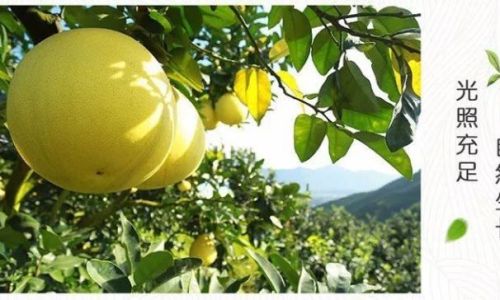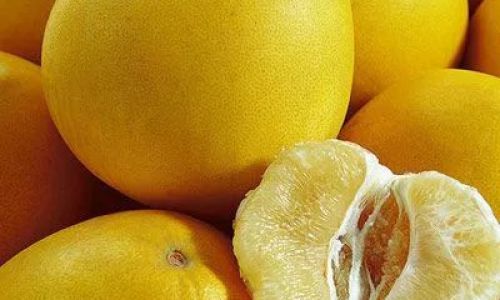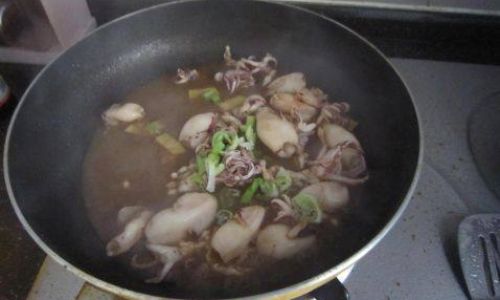Grapefruit, a citrus gem renowned for its tangy-sweet flavor and vibrant hue, has captivated taste buds and health enthusiasts alike for centuries. While this tropical fruit is available year-round in many regions, its true essence—bursting with juice, aroma, and nutritional richness—is best experienced during specific seasons. Understanding the optimal time to indulge in grapefruit not only enhances culinary enjoyment but also maximizes health benefits. This article delves into the science behind grapefruit seasons, the global factors influencing its availability, and why timing matters for both flavor and nutrition.
The Cycles of Growth: When Grapefruit Thrives
Grapefruit (Citrus × paradisi) is a subtropical crop that thrives in regions with warm climates and distinct wet and dry seasons. Its growth cycle typically spans 9 to 12 months, from blossom to harvest. The fruit’s development is intricately tied to temperature, sunlight, and rainfall, making seasonal variations critical to its quality.
In the Northern Hemisphere, grapefruit trees begin blooming in spring, with tiny fruits emerging by early summer. As temperatures rise, the fruits swell, accumulating sugars and acids that define their taste. Harvesting usually peaks between November and April, depending on the variety and location. For instance, Florida’s grapefruit season stretches from October to June, while California’s crop matures from October to April. In Mediterranean climates, such as Spain and Israel, harvests occur between December and March.

Conversely, in the Southern Hemisphere, where seasons are reversed, grapefruit cultivation aligns with the months of March to September. Countries like Australia, South Africa, and Argentina supply the fruit during their winter and spring months, ensuring a year-round global availability. However, the peak quality—marked by juiciness, thin rind, and balanced sweetness—is universally associated with the cooler, drier months of each hemisphere’s late autumn and winter.
Why Seasonal Grapefruit Tastes Better
The adage “eat with the seasons” holds particular truth for grapefruit. During peak growing periods, the fruit benefits from optimal environmental conditions:
-
Cooler Temperatures Enhance Sweetness: As nights grow colder, grapefruit trees convert starches into sugars, intensifying the fruit’s natural sweetness while maintaining its characteristic tartness. This balance creates the complex flavor profile grapefruit is prized for.
-
Slower Ripening Preserves Texture: Fruits harvested in-season have had ample time to mature on the tree, resulting in tender flesh and minimal pith (the bitter white layer beneath the rind). Out-of-season grapefruit, often picked prematurely to meet global demand, may taste bland or have a thicker, tougher rind.
-
Natural Stressors Boost Nutrients: Environmental stressors like occasional dry spells or temperature fluctuations during peak seasons can stimulate grapefruit trees to produce higher levels of antioxidants and vitamins as a survival mechanism. This translates to more nutrient-dense fruit.
Nutritional Powerhouse: Seasonal Benefits
Grapefruit is a dietary superstar, packed with vitamins, minerals, and bioactive compounds. Consuming it during peak season amplifies these benefits:
-
Vitamin C Boost: A single medium grapefruit provides over 100% of the daily recommended intake of vitamin C, crucial for immune function and skin health. Seasonal fruit tends to have higher vitamin C levels due to slower ripening.
-
Antioxidant Abundance: Grapefruit is rich in lycopene (in red and pink varieties), beta-carotene, and flavonoids like naringenin. These antioxidants combat oxidative stress, reduce inflammation, and may lower the risk of chronic diseases.
-
Fiber for Digestive Health: One grapefruit contains about 6% of the daily fiber requirement, aiding digestion and promoting satiety. Seasonal fruit’s higher water content also supports hydration.

-
Metabolic Benefits: Studies suggest that compounds in grapefruit, such as limonoids, may enhance insulin sensitivity and aid weight management. However, interactions with certain medications (e.g., statins) necessitate caution.
Global Varieties and Their Seasons
Grapefruit’s popularity has led to the cultivation of numerous varieties, each with its own seasonal window and flavor nuances:
-
Ruby Red: The most commercially successful variety, Ruby Red grapefruits peak from November to April. Their deep crimson flesh is sweeter than white varieties, with a hint of berry-like sweetness.
-
White Marsh: Also known as “blonde” grapefruit, this variety has a tangier, slightly bitter taste. It’s harvested earlier, from October to December, and is popular in juices and marmalades.
-
Star Ruby: A mutation of Ruby Red, Star Ruby has fewer seeds and a thinner rind. Its season aligns with Ruby Red but offers a more intense flavor.
-
Oro Blanco: A hybrid of grapefruit and pomelo, Oro Blanco is less acidic and sweeter, with a season spanning December to March.
-
Mediterranean Varieties: In regions like Spain and Israel, cultivars such as “Flame” and “Rio Red” dominate, harvested between December and March.
How to Select and Store Grapefruit
To fully enjoy seasonal grapefruit, proper selection and storage are key:
-
Look for Heft: A ripe grapefruit should feel heavy for its size, indicating high juice content.

-
Check the Skin: The rind should be smooth, firm, and vibrant in color (yellow, pink, or red, depending on the variety). Avoid fruits with soft spots or wrinkled skin.
-
Store Wisely: Uncut grapefruit can be kept at room temperature for up to a week or refrigerated for 2–3 weeks. Once cut, store in an airtight container in the fridge for 3–4 days.
-
Freeze for Longevity: Juice or zest can be frozen for up to 6 months, preserving flavor for off-season use.
Culinary Delights: Seasonal Recipes
Grapefruit’s versatility shines in both sweet and savory dishes. Here are seasonal recipes to elevate your winter menu:
-
Grapefruit and Avocado Salad: Toss segments of Ruby Red grapefruit with diced avocado, arugula, and toasted almonds. Drizzle with honey-lime dressing for a refreshing salad.
-
Broiled Grapefruit with Cinnamon: Halve a grapefruit, sprinkle with cinnamon and a touch of brown sugar, then broil until caramelized. Serve warm as a breakfast treat.
-
Grapefruit Salsa: Combine diced grapefruit, red onion, jalapeño, cilantro, and lime juice. Serve with grilled fish or as a tangy chip dip.
-
Grapefruit and Rosemary Sparkler: Muddle grapefruit wedges with fresh rosemary, top with sparkling water, and garnish with a thyme sprig for a non-alcoholic mocktail.
-
Roasted Grapefruit Brûlée: Sprinkle grapefruit halves with turbinado sugar, torch until crisp, and serve with Greek yogurt for a decadent dessert.

The Environmental and Economic Impact of Seasonal Eating
Choosing seasonal grapefruit also aligns with sustainability goals. Out-of-season produce often requires energy-intensive greenhouses, artificial ripening, or long-distance transportation, increasing carbon footprints. By contrast, seasonal grapefruit is typically grown locally or regionally, reducing emissions and supporting small-scale farmers.
Moreover, seasonal harvests ensure better economic returns for growers, as surplus supply during peak months lowers prices for consumers while maintaining fair wages for producers.
Grapefruit in Culture and History
Grapefruit’s allure extends beyond the kitchen. Native to Barbados, the fruit was discovered in the 18th century as a natural hybrid of the pomelo and sweet orange. Its name, “grapefruit,” stems from its tendency to grow in clusters resembling grapes.
In traditional medicine, grapefruit was used to treat digestive issues and fevers. Today, it symbolizes vitality in art and literature, with its vibrant hue and zesty flavor inspiring culinary creativity worldwide.
Conclusion: Timing Is Everything
The best season to eat grapefruit hinges on hemispheric location and variety, but the golden rule remains: opt for locally grown, in-season fruit during the cooler months. Not only does this guarantee superior taste and nutrition, but it also fosters sustainability and supports agricultural communities.
Whether enjoyed fresh, juiced, or incorporated into recipes, grapefruit at its peak is a testament to nature’s rhythm—a fleeting pleasure that rewards patience and mindful consumption. So, as autumn leaves fall or southern winters bloom, seize the season to savor this citrus marvel in all its glory. Your palate and health will thank you.





0 comments